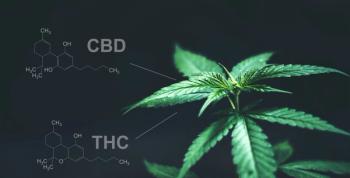Cannabis Science and Technology
- Women in Grow: Leadership in Cannabis Genetics and Cultivation
- Pages: 5-7
Insights in Cannabis Genetics with Anna Schwabe, PhD
Researcher and educator Anna Schwabe, PhD, shares insights into her discoveries in cannabis genetics and their significance in the industry.
Cannabis Science and Technology had the pleasure of speaking with cannabis genetics expert and researcher, Anna Schwabe, PhD. Dr. Schwabe holds her bachelor’s, master’s and doctorate’s degrees from the University of Northern Colorado, receiving the Graduate Dean Citation for Excellence and the Dean’s Award for Outstanding Dissertation for “A Multifaceted Approach to Address Variation in Cannabis Sativa” (1). Along with holding several leadership and consulting roles with several organizations and institutions, she is currently an Associate Lecture Professor at the University of Colorado and the Chief Operating Officer of CannaGen, an online cannabis genetic marketplace for licensed breeders, nurseries, and cultivators.
Background in Plant Research
After completing her bachelor’s degree with an emphasis on cellular and molecular biology, Anna Schwabe’s interest in plants started with a course in plant systematics at Colorado State University, which sparked an interest in botanical illustrations and led to a capstone project of extracting DNA from cacti. This turned into a Master’s project and work at the Denver Botanic Gardens. After recreational cannabis was approved by voters in Colorado in 2012, interest and questions in the community began to emerge. For example, why does the Blue Dream strain of cannabis seem to differ from one dispensary to another? With her background in population genetics and with the tools at hand, she saw an opportunity to fill the research gaps by extracting DNA from cannabis in her laboratory.
Challenges in the Industry
This question on the genetic variation of the same commercial strains led to a project (2) encompassing more than 120 samples with 30 strains from dispensaries across three states. Were the strains genetically identical or at least highly similar? The answer was generally no, Dr. Schwabe explains. Strain inconsistencies were evident across multiple states. Furthermore, she and her team also discovered that the samples could be categorized into two genetic groups, but the groups did not correspond with the Sativa, Indica, and Hybrid types described in online databases.Schwabe also went on to investigate how different “research grade marijuana” supplied by the National Institute on Drug Abuse (NIDA) was from commercially available options (3). That research found that the “research grade marijuana” grown exclusively by the University of Mississippi differed significantly, lacked genetic diversity, and therefore results based on this cannabis was not generalizable (4). The next question became, if various cannabis samples contained different genetics, will the cannabis all smell the same? An organoleptic study found that not only were the differences in smells evident, but there was also a significant amount of variation between identical cannabis too (5). This investigation led to another discovery: discrepancies between the amount of THC on the packaging label and the THC amounts after testing. In 2023 Dr. Schwabe conducted another study using 23 cannabis samples representing two strains and found that on average, for about 70% of the samples, the THC potency on the label was approximately 15% higher than test results of the flower (6). This is significant because higher THC potency is associated with higher prices of cannabis.
Lab shopping, mislabeled packaging, and THC inflation has been an ongoing challenge in the industry. “It’s problematic because for most people, it might just equal not having expected effects,but there are people who make their own medicine that use those numbers to get the right dose,” Dr. Schwabe explains. “It [also] means that we’ve got a problem in the industry, that we’re lying to consumers. Is it just THC, or is it more? Are we lying about yeast and mold counts? Are we lying about heavy metals? Are we lying about pesticides? And it creates distrust from consumers when we’re not generating accurate or results for them to make their purchasing decisions.”
The problem of mislabeling is not unique to the cannabis industry, she notes, but there is another layer to consider here. Being a federally illegal drug, there is not an established way to register a cultivar when they are developed. Cannabis record keeping had been done under the radar for decades, and genetic testing has helped begin to correct the errors. Making genotyping more affordable would also verify the strains being sold, she adds. Currently, the cost varies widely depending on the type of tool used, but there are other challenges surrounding genotyping in the industry as a whole. For example, past data from some testing companies is no longer available, public database are not always user friendly, and paid services don’t always make their data publicly available.
While Dr. Schwabe does not believe genotyping should be mandated, she does believe it’s important for transparency and fostering consumer trust. Ultimately, consumers may have more incentive to buy genotyped strains because they have more confidence in their identity and quality.
Cannabis Evolutionary Characteristics
Cannabis is complex and unique. “Cannabis is a really interesting plant, and that’s part of the reason why I love it,” says Schwabe. “I would even go as far to say that cannabis is the most interesting plant on the planet.” For example, it is one of only 6% of flowering plants that are dioecious, meaning there are separate male and female plants. Additionally, it is one of the earliest cultivated plants in human history, leading to its complicated genome. Interestingly, as a wind-pollinated plant, there may not be any truly wild cannabis left, she explains, because as human population has migrated around the earth, pollen from cultivated cannabis has probably reached the wild cannabis even if the humans have not.
Locally adapted cannabis provides more questions and research areas are on the horizon. “Something really interesting that could be investigated in the future are the secondary metabolites—the terpenes and the other compounds that the plant produces,” says Dr. Schwabe. “Are there different terpenes that are produced in these localized areas and do they have a function in terms of what pests and predators are in those areas?”
According to Dr. Schwabe, additional research could be done with diseases such as powdery mildew and hop latent viroid, and the potential for locally adapted plants to show more resistance to these pathogens than the indoor cultivated plants do.
Plans for the Future
Dr. Schwabe is currently part of several different cannabis-related startups and projects. For example, she is the Principal Research Director for the nonprofit Agricultural Genomics Foundation, founded by Daniela Vergara, PhD, which works to advance cannabis genetics, genomics, and education, with plans to partner with farmers in seed trials to see how the plants perform in different environments. Most recently, Dr. Schwabe joined CannaGen as Chief Operating Officer, a centralized marketplace for sellers and buyers to find and display transparent information on COAs, genetic tests, and pathogen tests. Dr. Schwabe’s impressive CV and continuing work in the cannabis space is a testament to her deep commitmentdemonstrates her dedication to the progress of cannabis science and her continued commitment to advancing both the science and commerce of cannabis products.
References
- Schwabe, A.L., “A Multifaceted Approach to Address Variation in Cannabis Sativa” (2019). Dissertations. 554.
https://digscholarship.unco.edu/dissertations/554 - Schwabe, A.L.; McGlaughlin, M.E. Genetic tools weed out misconceptions of strain reliability in Cannabis sativa: implications for a budding industry. J Cannabis Res. 2019, 1, 3. DOI:
10.1186/s42238-019-0001-1 - Schwabe, A.L.; Hansen, C.J.; Hyslop, RM.; and McGlaughlin, ME. Comparative Genetic Structure of Cannabis sativa Including Federally Produced, Wild Collected, and Cultivated Samples. Front. Plant Sci. 2021, 12. DOI:
10.3389/fpls.2021.675770 - Vergara, D.; Huscher, E.L.; Keepers, K.G.; Pisupati, R.; Schwabe, A.L.; McGlaughlin, M.E.; and Kane, N.C. Genomic Evidence That Governmentally Produced Cannabis sativa Poorly Represents Genetic Variation Available in State Markets. Front. Plant Sci. 2021, 12. DOI:
10.3389/fpls.2021.668315 - Schwabe A.L.; Naibauer S.K.; McGlaughlin, M.E.; Gilbert, A.N. Human olfactory discrimination of genetic variation within Cannabis strains. Front. Psychol. 2022, 13. DOI:
10.3389/fpsyg.2022.942694 - Schwabe, A.L.; Johnson, V.; Harrelson, J.; McGlaughlin, M.E. Uncomfortably high: Testing reveals inflated THC potency on retail Cannabis labels. PLOS One. 2023, 18 (4). DOI:
10.1371/journal.pone.0282396
Articles in this issue
Newsletter
Unlock the latest breakthroughs in cannabis science—subscribe now to get expert insights, research, and industry updates delivered to your inbox.






